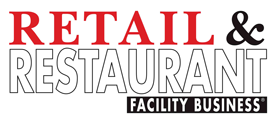— By Jay Fiske —
Connected equipment lays the foundation.
Happy New Year! Brick-and-mortar retailers are starting 2025 with the wind at their backs. According to worldwide commercial real estate services and investment company CBRE, average monthly foot traffic in top retail districts could surpass pre-pandemic levels by late this year. But whether getting more customers in the door will elevate stores’ top and bottom lines remains an open question. To capitalize on this foot traffic, facility managers must help their stores provide a great experience while controlling costs.
Balancing these two imperatives remains a challenge. Not only are retailers still dealing with inflation; they are highly dependent on their HVAC and lighting systems to provide an environment that makes shopping and browsing a pleasure — neither too hot nor too cold, with the right amount of lighting adding to the ambiance. But energy is expensive. McKinsey & Co. has noted that it’s “the fourth largest in-store operating cost for U.S. retailers…” A retailer with a 50,000-square-foot space might need to set aside $90,000 annually for energy. Electricity costs alone may rise 2%-4% for businesses in 2025.
Facility managers hold the key to delivering a terrific customer experience while controlling energy costs. To do so when they have dozens or hundreds of stores in their portfolios, they increasingly rely on technologies. AI and Internet of Things (IoT) are two examples. By connecting every store’s HVAC, lighting and signage through IoT — and then monitoring and controlling all these systems from the cloud — facility managers deliver meaningful improvements. AI and machine learning enhance their capabilities, providing data and insights to prevent additional waste.
These solutions also bolster the efforts of store staff, who know that the right environment makes the difference between a customer dashing out the door or making a purchase. Employees may turn the thermostats up or down with the goal of keeping every customer engaged, but they may do so without thought for the stores’ energy budgets. These well-intentioned actions could lead to massive waste over time without having any meaningful positive impact on the customer experience — and in some cases, having an adverse effect.
A team member in one location could turn up the heat and press hold, forgetting to hit reset when the store closes and everyone has left the premises. Or a staffer at another site might not notice that some lights are staying off — presenting a safety hazard for employees restocking the shelves.
IoT solutions enable facility managers to automate these kinds of processes, optimize settings throughout the day and night, and program updates for busy shopping periods (when stores might open earlier or close later). IoT solutions also alert managers to unexpected “exceptions” (indicating a malfunctioning HVAC unit, for example) in time to reduce their impact on comfort, safety and budgets.
AI solutions work in concert with IoT systems to anticipate and avoid overuse of equipment like air conditioning during peak demand periods, when retailers could see their utility charges rise dramatically because of the collective load on the grid. With the AI-enabled automation all happening in the background, shoppers never notice while retailers reap the benefit of lower utility bills.
Indeed, technology that connects, controls and provides insights on equipment enables facility managers to ensure that shoppers continue to associate their brands with the same superlative experience, whatever location they visit — supporting both top- and bottom-line growth. IoT and AI are helping retailers lay the foundation for a happy and successful new year.
— Jay Fiske is president of Powerhouse Dynamics, the leading Internet of Things (IoT) solutions provider for eliminating waste in the operations of multi-site retail and foodservice facilities. The company’s IoT platform, sold under two different brands — SiteSage® for retail and other commercial operators, and Open Kitchen® for foodservice operators — provides control over key equipment for reduced waste and increased cost savings, actionable insights for more informed decisions on equipment and operations, and improved processes for consistent, positive experiences in their facilities. Contact the author at [email protected].

